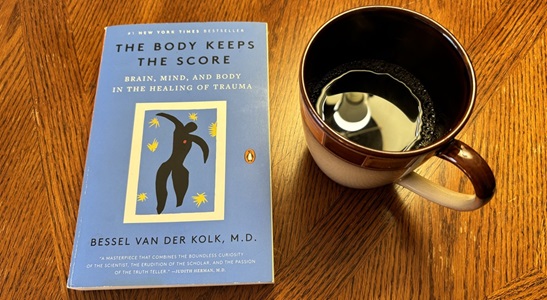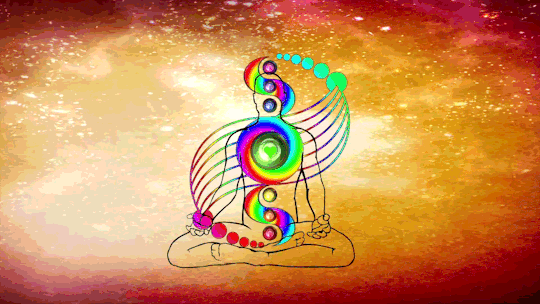Final healing is part twelve of my thirteen part commentary and synopsis of The Body Keeps the Score, Brain, Mind and Body in the Healing of Trauma by Bessel van der Kolk.
1. INTRODUCTION: Childhood Trauma Causes Addiction
2. 12 Steps & 12 Traditions: Damaging Emotional Conflicts
3. Trauma Damages Left Brain Speech
4. BIOFEEDBACK: Meditative States of Consciousness
5. INTEROCEPTION: Traumatic Awareness
6. What Were You Thinking Right Before You Acted Out Your Childhood Trauma?
7. Communication is the Opposite of Trauma
8. ALEXITHYMIA: Inability to Feel Emotion
9. EMDR Reprocesses Body Awareness and Does Not Visit the Original Trauma in Detail
11. Lock Down Your Childhood Trauma Instead of Acting it Out
12. Final Healing: The Patient’s Internal Landscape Manifests Critical Mass of Self
13. Eye Movement Desensitizing Reprocessing of Traumatic Memories
12. FINAL HEALING: When the patient’s internal landscape manifests critical mass of Self, the therapist steps aside.
The Body Keeps the Score, (2014) by Bessel van der Kolk, M.D., Chapter 17, Page 286 Internal Landscape: “The second assumption is that, rather than being a passive observer, this mindful Self can help reorganize the inner system and communicate with the parts in ways that help those parts trust that there is someone inside who can handle things. Again neuroscience research shows that this is not just a metaphor. Mindfulness increases activation of the medial prefrontal cortex and decreases activation of structures like the amygdala that trigger our emotional responses. This increases our control over the emotional brain. We can practice self-leadership and get well.
The Self takes an active leadership role during meditation treatment
Even more than encouraging a relationship between a therapist and a helpless patient, final healing focuses on cultivating an inner relationship between the Self and the various protective parts. In this model of treatment the Self doesn’t only witness protective parts. In this model of treatment the Self doesn’t only witness or passively observe, as in some meditation traditions; it has an active leadership role. The Self is like an orchestra conductor who helps all the parts to function harmoniously as a symphony rather than a cacophony. Meditation plays an active leadership role in conducting the parts into a whole.
GETTING TO KNOW THE INTERNAL LANDSCAPE, page 286
The task of the therapist is to help patients separate this confusing blend into separate entities, so that they are able to say: “This is part of me is like a little child, and that part of me is more mature but like a victim.“ They might not like many of these parts, but identifying them makes them less intimidating or overwhelming.
The next step is to encourage patients to simply ask each protective part as it emerges to “stand back” temporarily so that we can see what it is protecting. When this is done again and again and again, the parts begin to unblend from the Self and make space for mindful self observation.
Patients learn to put their fear, rage, or disgust on hold and open up to states of curiosity and self-reflection From the stable perspective of Self they can begin constructive inner dialogues with their parts. “Perhaps my childlike parts could be less involved than my more mature parts today.”
Patients are asked to identify the part involved in the current problem
Like feeling worthless, abandoned, or obsessed with vengeful thoughts. As they ask themselves, “What inside me feels that way?” an image may come to mind. Maybe the depressed part looks like an abandoned child, or an aging man, or an overwhelmed nurse taking care of the wounded; a vengeful part might appear as a combat marine or a member of a street gang. “I feel like a lost and lonely child with nobody to play with.” “Who am I today? A lost and lonely old man in West Los Angeles?”
What Happens Next?
Next the therapist asks, “How do you feel toward that (sad, vengeful, terrified) part of you?” This sets the stage for mindful self-observation by separating the “you” from the part in question. If the patient has an extreme response like “I hate it,” the therapist knows that there is another protective part blended with the Self. She might then ask her patient, “See if the part that hates it would step back.” Then the protective part is often thanked for its vigilance and assured that it can return anytime if needed. The therapist functions like a traffic cop keeping the images moving and flowing. Not much time is spent on analysis. We are just watching the sad and lonely movie play out. The requests are for feelings. “What did you notice next?”
Final Healing Treatment Goal is Critical Mass of Self
Once a patient’s internal landscape manifests a critical mass of Self, this kind of dialogue begins to take place spontaneously and we have attained final healing. At this point it’s important for the therapist to step aside and just keep an eye out for other parts that might interfere, or make occasional emphatic comments, or ask questions like “What do you say to the part about that?” “That’s good, thank you for sharing that.” Just keep the associations moving along like the view from the windows of a train. Let the subconscious images flow and heal with the brain spontaneously heals with the rapid eye movements of Eye Movement Desensitizing Reprocessing (EMDR).
In the end, for severely traumatized people to heal the strength often comes from deep within. They must be able to deal with their misery and hurt by recruiting their own strength and self-love, enabling them to totally and utterly heal themselves. These cycles will come to a end only when the Self is able to take charge and the system feels safe.
The Burden of Toxicity, The Body Keeps The Score: page 291
Most incest and emotional abuse survivors hate themselves. These damaged souls feel that they are nothing but that rejected, weak, unloved and abandoned child of ancient and distorted memory. The Self becomes “blended” with the exiles, and every possible alternative for our life is eclipsed. Then as Schwartz points out, “We see ourselves, and the world, through their eyes and believe it is ‘the’ world. In this state it won’t occur to us that we have been hijacked.”



